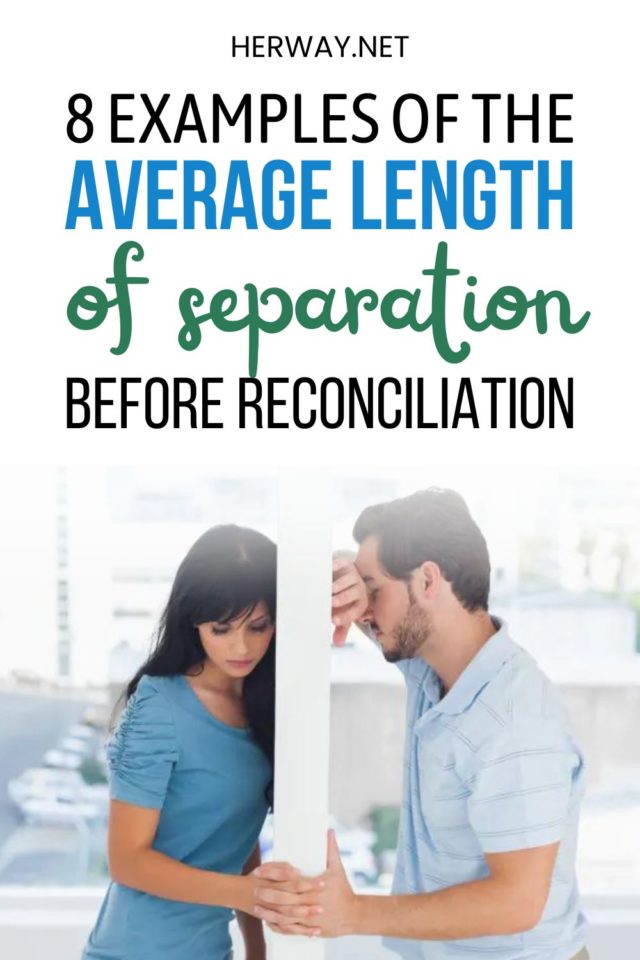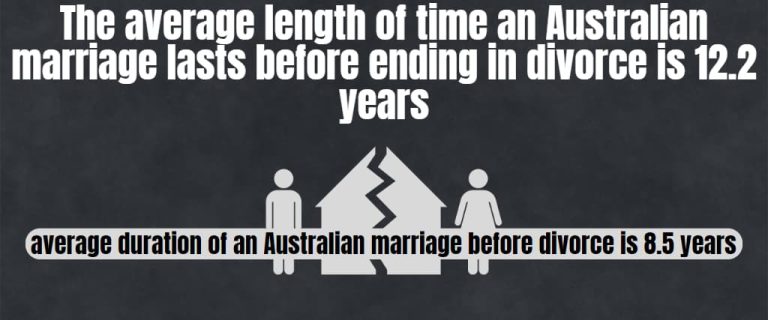Average Length Of Separation Before Reconciliation

The journey of separation in a marriage is often fraught with uncertainty, leaving couples grappling with the question: how long does it typically last before reconciliation becomes a possibility, or the decision to divorce is finalized? Research into marital separation and reconciliation reveals varying timelines, influenced by a complex interplay of factors. Understanding these trends can offer valuable insights for couples navigating this challenging period.
This article delves into the available data and expert opinions to shed light on the average length of separation before reconciliation, exploring the elements that contribute to these outcomes. While definitive answers remain elusive due to the individual nature of each relationship, examining patterns can provide a framework for understanding the landscape of marital separation and its potential paths.
The Elusive Average: Data and Research
Pinpointing an exact average length of separation before reconciliation is difficult due to the myriad of individual circumstances and a lack of comprehensive, longitudinal studies specifically focused on this metric.
However, studies on marriage and divorce provide some context. For instance, research from organizations like the American Psychological Association and the Relate Institute (UK) suggests that separations can range from a few months to several years. Data indicates that a significant portion of separated couples ultimately divorce, but a notable percentage does reconcile.
The Australian Institute of Family Studies, in its research on divorce, has also touched upon separation periods. While they do not provide a specific reconciliation timeframe, their data on divorce applications includes information on the duration of separation prior to filing, offering a partial glimpse into the separation experience.
Factors Influencing Reconciliation Timelines
Several factors significantly impact the length of separation and the likelihood of reconciliation. These elements include the reasons for the initial separation, the level of communication between partners during the separation, and the willingness of both individuals to engage in therapy or counseling.
Infidelity, financial difficulties, and communication breakdowns are frequently cited reasons for separation. The severity and nature of these issues can drastically alter the path toward reconciliation.
If the separation stems from a desire for personal growth or individual space, rather than deep-seated conflict, the chances of reconciliation may increase, potentially leading to a shorter separation period. Open and honest communication during the separation, even if challenging, is also a critical factor.
The Role of Therapy and Counseling
Therapy, particularly couples counseling, can significantly shorten the separation period or increase the chances of successful reconciliation. A skilled therapist can help couples identify and address the underlying issues that led to the separation.
Couples therapy provides a structured and safe environment for communication, allowing partners to express their feelings, understand each other's perspectives, and develop strategies for resolving conflicts.
Individual therapy can also be beneficial, helping each partner work through personal issues that may be contributing to the marital problems. The presence and active participation in therapy greatly influences the potential for reconciliation.
Impact on Individuals and Society
The length of separation and the ultimate outcome – reconciliation or divorce – profoundly impact individuals and society. For couples with children, the separation period can be particularly stressful and disruptive to family dynamics.
Children often experience emotional distress, anxiety, and behavioral problems during their parents' separation. Therefore, minimizing the length of separation and ensuring a stable, supportive environment are crucial for the well-being of children.
From a societal perspective, high divorce rates, often preceded by prolonged separations, can have economic implications, affecting housing, welfare systems, and legal resources. Understanding the factors that influence reconciliation can inform policies and programs aimed at supporting families and promoting marital stability.
A Human Perspective
Consider the story of *Sarah and John*. After years of struggling with communication issues, they decided to separate. Initially, they had minimal contact and feelings of anger and resentment were present.
After several months, with the encouragement of friends, they individually sought therapy. This led to a more open dialogue.
Ultimately, after a year of separation and dedicated effort, they began couples counseling and decided to reconcile, armed with new communication skills and a deeper understanding of each other's needs. Their story illustrates the possibility of reconciliation with active effort and professional support.
Conclusion
While an exact average length of separation before reconciliation remains elusive, research and expert opinions suggest that the timeline varies significantly, influenced by numerous factors. These factors include the reasons for separation, the level of communication, and the willingness to engage in therapy.
Understanding these influencing elements can empower couples navigating separation to make informed decisions about their future. Whether the path leads to reconciliation or divorce, gaining clarity and support during this challenging time is essential for individual well-being and the stability of families.
Ultimately, the journey of separation is deeply personal, and the timeline towards reconciliation, or the decision to move forward separately, is unique to each relationship.














![Average Length Of Separation Before Reconciliation Divorce Rate in Florida | The Latest Statistics [Updated 2023]](https://divorce.com/static/multisite/img/multisite/divorcecom/blog/divorce-rate-florida/average-length-of-marriage-in-florida.5d7af5e05ede.png)
![Average Length Of Separation Before Reconciliation Divorce Rate in Utah | The Latest Statistics [Updated 2023]](https://divorce.com/static/multisite/img/multisite/divorcecom/blog/divorce-rate-utah/average-length-marriage-utah.c916c60bcb98.png)
![Average Length Of Separation Before Reconciliation West Virginia Divorce Laws: What You Need to Know [FAQ]](https://wvadivorce.com/wp-content/uploads/2023/08/divorce-length-west-virginia.jpg)

